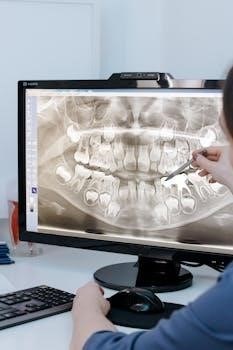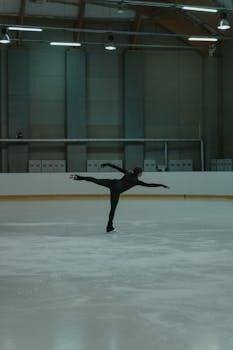tmj jaw exercises pdf

Understanding TMJ Disorders
Temporomandibular joint (TMJ) disorders affect the jaw joint and surrounding muscles․ These conditions can lead to pain, discomfort, and limited jaw movement, impacting daily activities such as eating, speaking, and sleeping․ TMJ issues can arise from various factors․
What is TMJ (Temporomandibular Joint) Disorder?
TMJ, or temporomandibular joint disorder, refers to a group of conditions affecting the jaw joint and the muscles controlling jaw movement․ These disorders can stem from various causes, including orthodontic work, teeth shifting, or habits like clenching and grinding․ TMJ issues may lead to pain in the jaw, face, or neck, and can also cause clicking, popping, or grinding sensations․ Untreated TMJ can impact breathing, eating, sleeping, and overall quality of life․ It’s essential to address TMJ symptoms and seek appropriate treatment to manage and improve function․

Common TMJ Symptoms
Common TMJ symptoms include pain and discomfort in the jaw area, clicking or popping sounds when moving the jaw, and grinding sensations․ These symptoms can significantly impact daily life and may require management․
Pain and Discomfort in the Jaw Area
Experiencing pain and discomfort in the jaw area is a hallmark symptom of TMJ disorders․ This pain can range from a dull ache to sharp, intense sensations․ It might be localized to the jaw joint itself or radiate to the surrounding areas, including the face, ear, and neck․ Often, this pain is exacerbated by activities such as chewing, yawning, or even talking, which can further restrict jaw movement․ This discomfort can fluctuate in intensity and may be accompanied by tenderness in the jaw muscles․
Jaw Clicking, Popping, or Grinding
Another common symptom associated with TMJ disorders is the presence of unusual sounds emanating from the jaw joint․ Individuals might experience clicking, popping, or grinding noises when opening or closing their mouth․ These sounds can be subtle or quite pronounced and may or may not be accompanied by pain․ Sometimes, these noises indicate a misalignment or dysfunction within the jaw joint itself, reflecting issues with the disc or cartilage․ The severity and frequency of these sounds can vary among individuals․
Basic TMJ Exercises
Simple exercises can help improve jaw mobility and reduce discomfort․ These exercises involve gentle movements, like controlled opening and closing, and specific tongue placements, which aim to relax jaw muscles․
Jaw Opening and Closing Exercises
Begin by sitting or standing upright with relaxed shoulders, facing a mirror to monitor your movements․ Slowly open your mouth, stopping when you feel a gentle stretch, approximately 75% of your maximum opening․ Hold this position for about 20 seconds, then slowly close your mouth until your lips touch․ Repeat this process five times for about two minutes․ It’s beneficial to perform this exercise four times a day or whenever you notice your teeth clenching․
Tongue Placement Exercises
Start by placing the tip of your tongue on the roof of your mouth, specifically on the rugae, the ridges behind your upper front teeth․ With your tongue in this position, open your mouth slightly, about one finger’s width, then release your tongue․ Continue opening your mouth to approximately 40 millimeters․ Maintain this position for about 10 seconds․ You can also perform this exercise without keeping the tongue on the roof of the mouth, simply opening your mouth within a comfortable range․

Advanced TMJ Exercises
Advanced exercises include isometric and isotonic stabilization to strengthen jaw muscles․ Jaw tracking exercises help restore proper joint movement․ These are designed to improve control and range of motion and require careful execution․
Isometric and Isotonic Stabilization Exercises
Isometric exercises involve contracting jaw muscles without movement, such as pressing your tongue against the roof of your mouth while resisting jaw opening․ Isotonic exercises include controlled jaw movements against resistance, using your hand or a light object; These exercises enhance muscle strength and stability, improving jaw function․ These techniques are crucial for restoring proper joint mechanics and reducing pain by gradually strengthening the muscles around the temporomandibular joint and promoting better control during jaw movements․ They help in creating a balanced and stable jaw motion․
Exercises for Jaw Tracking
Exercises for jaw tracking aim to restore smooth and coordinated movement of the jaw․ These exercises often involve controlled opening and closing movements, focusing on maintaining a straight path․ Techniques such as using a mirror to monitor jaw alignment during movement can help correct deviations․ Consistent practice of these exercises helps to improve the tracking of the jaw, preventing clicking, popping, and pain․ It will enhance the overall function by ensuring that the jaw joint moves in a proper and balanced manner through the correct range of motion and minimize stress․

Posture and TMJ
Proper posture is crucial in managing TMJ disorders, as poor posture can strain jaw muscles and contribute to pain․ Maintaining an upright posture and aligning the head and neck will help reduce TMJ stress․
The Importance of Posture in TMJ Management
Maintaining proper posture is fundamental in the effective management of temporomandibular joint (TMJ) disorders․ Poor postural habits can exacerbate TMJ symptoms by placing undue stress on the jaw muscles and joints․ Forward head posture, for instance, can lead to increased tension in the neck and jaw, contributing to pain and dysfunction․ Correct posture, involving alignment of the head, neck, and spine, helps reduce strain and supports optimal jaw function․ Addressing postural imbalances is essential for comprehensive TMJ treatment․ Proper posture is key to relieving TMJ pain․

Self-Massage Techniques
Self-massage can effectively relieve tension in the jaw muscles associated with TMJ disorders․ Gentle massage techniques can reduce pain, improve circulation, and promote relaxation in the affected area․ This can be done at home․
Massage for TMJ Muscles
Massaging the muscles around the temporomandibular joint can provide significant relief from pain and tension․ Use gentle circular motions with your fingertips on the masseter and temporalis muscles․ These are the muscles located on your cheeks and temples․ Focus on areas that feel tight or tender, applying light pressure․ You can also use your thumbs to massage the muscles under your jawbone․ Perform these massages daily to reduce muscle spasms and improve jaw function, which can be incredibly helpful for pain management and overall well-being․
Additional TMJ Treatment Options
Besides exercises, various treatments exist for TMJ disorders․ These include professional help from specialists, physical therapy, and other therapies, such as botulinum toxin injections or splint therapy, to manage symptoms and improve jaw function․
When to Seek Professional Help
If self-care measures, such as basic TMJ exercises, do not provide adequate relief, seeking professional help becomes crucial․ Persistent pain, limited jaw movement, or symptoms that affect eating, speaking, or sleeping warrant a consultation with a TMJ specialist․ These specialists can accurately diagnose the underlying cause of the disorder and recommend a tailored treatment plan, which may include additional therapies, manual therapy, or other interventions․ Early professional intervention can prevent the condition from worsening and improve long-term outcomes․
Other Therapies for TMJ
Beyond exercises, several other therapies can help manage TMJ disorders․ These may include manual therapy performed by a physical therapist, which involves specific techniques to mobilize the jaw joint and surrounding tissues․ Additionally, some patients may find relief through the use of oral splints or night guards, particularly if teeth grinding is a contributing factor․ In some cases, botulinum toxin injections may be considered to help relax jaw muscles․ Ultimately, the most appropriate treatment plan is decided through a professional consultation․